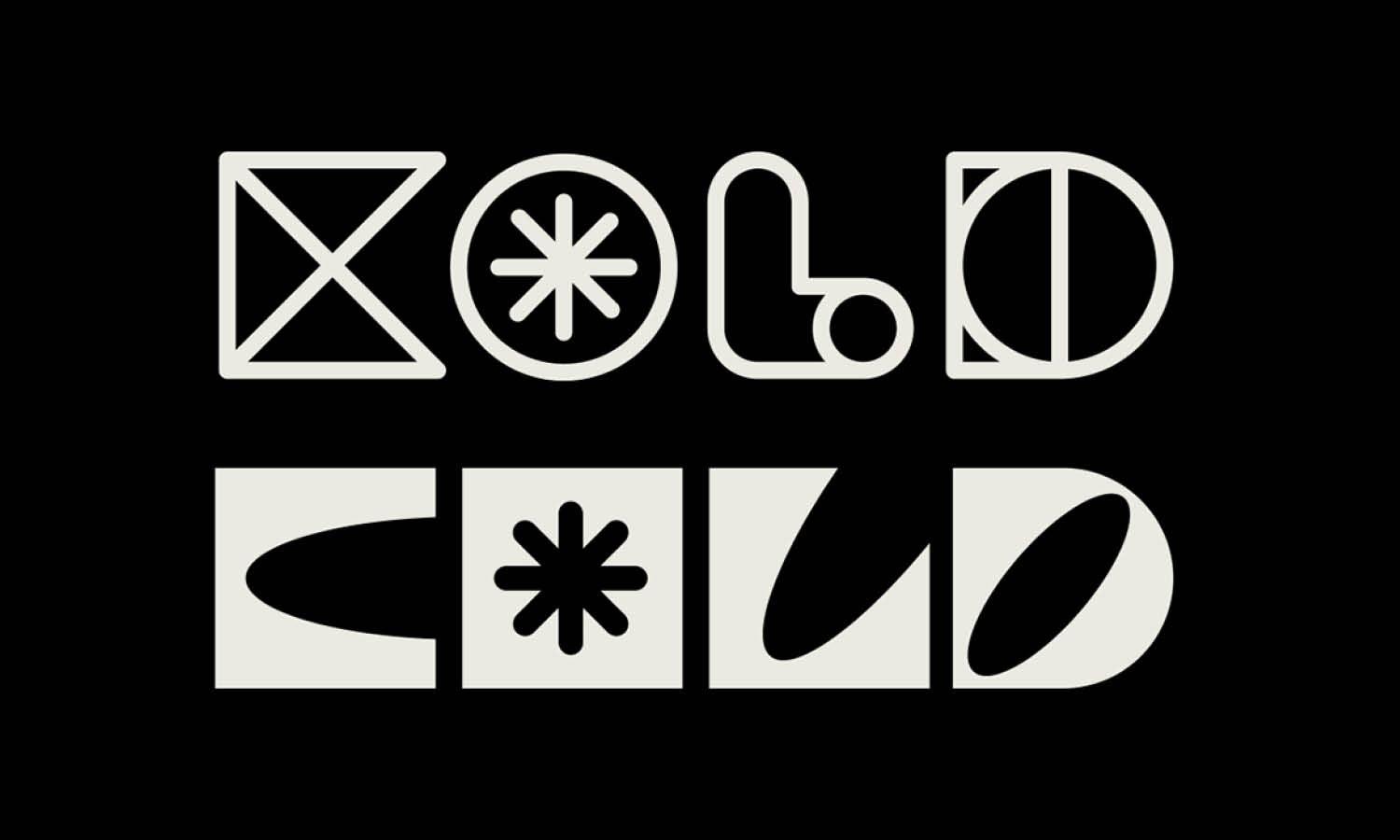How To Create Timelessness In Logo Design

Source: Alee Hyder, YNwA Invest AG - Brand Identity, Behance, https://www.behance.net/gallery/169080881/YNWA-Invest-AG-Brand-Identity
In the ever-evolving world of branding, the quest for a timeless logo remains a paramount goal for designers. A timeless logo transcends trends and ages, maintaining its effectiveness and relevance as consumer preferences and market dynamics shift. Achieving this level of endurance in logo design requires a deep understanding of the brand's core identity, coupled with strategic design choices that emphasize simplicity, functionality, and universal appeal.
Creating a logo that stands the test of time is not about merely avoiding the fleeting trends of the design world. Instead, it involves embracing the fundamentals of good design—balance, contrast, simplicity, and meaningful symbolism. These elements ensure that a logo not only captures the essence of the brand at the moment of its creation but continues to resonate with audiences for decades. In this article, we will explore key strategies to infuse your logo designs with timelessness, ensuring they serve as a lasting cornerstone of the brand’s visual identity.
Understand the Fundamentals of Design
Understanding the fundamentals of design is crucial for creating timeless logos. These fundamentals include balance, alignment, contrast, hierarchy, and simplicity, which are the building blocks of any effective design. A strong grasp of these principles allows designers to create logos that are not only visually appealing but also functionally effective.
Balance ensures that the logo feels stable and aesthetically pleasing, with elements distributed evenly or appropriately to create visual harmony. Alignment helps in organizing the logo elements in a coherent manner that guides the viewer's eye across the design. Contrast can be achieved through differences in color, size, or font type, which helps to make the logo stand out and enhances legibility. Hierarchy prioritizes the importance of the logo elements, ensuring that the most important parts are the most prominent. Lastly, simplicity refers to the removal of unnecessary elements, focusing on what is essential to avoid visual clutter and confusion.
These design principles are timeless because they are rooted in how humans perceive and process visual information. A logo designed with these fundamentals in mind will be more likely to remain effective and engaging, regardless of current trends. For example, the Nike Swoosh is a simple, balanced, and highly contrasted design that effectively communicates movement and athleticism without any unnecessary details.
By mastering these design fundamentals, logo designers can create works that are not only functional and beautiful but also enduringly relevant, ensuring their creations can stand the test of time in an ever-changing market.
Focus on Simplicity
The essence of creating a timeless logo often lies in the principle of simplicity. A simple design is not just aesthetically pleasing; it also ensures that the logo remains effective and adaptable across various applications and over time. Simple logos are easier for audiences to remember and recognize, which is essential for building brand identity. By stripping a logo down to its basic, essential elements, designers can avoid the pitfalls of trends that might feel outdated as years pass.
Simplicity in logo design means minimizing the use of complex graphics, intricate patterns, and multiple colors that could dilute the brand’s message. Instead, focusing on a single, strong graphical element or a unique typographic treatment can convey the brand’s values more powerfully and succinctly. Companies like Apple, Nike, and McDonald’s have mastered this approach, proving that simple logos can be iconic and enduring. By crafting a logo with clarity and restraint, designers can ensure that it remains timeless, versatile, and distinct in a crowded marketplace.
Choose Timeless Typography
Selecting the right typography is crucial for embedding timelessness in logo design. The choice of font can dramatically affect the logo’s clarity, aesthetic appeal, and its ability to stand the test of time. Timeless typography involves choosing typefaces that have proven their durability and effectiveness in brand representation across decades.
Classic fonts such as Serifs for their traditional elegance and Sans Serifs for their clean modernity are often go-to choices because they provide excellent legibility and flexibility in a wide range of applications. These fonts feature simple lines and forms that help maintain the logo’s legibility and recognition at different sizes and in various contexts.
The use of timeless typography ensures that a logo does not become dated as design trends evolve. It is also pivotal in maintaining consistency in a brand's visual identity across different platforms and media. For instance, brands like Coca-Cola and IBM have utilized classic typography in their logos to great effect, maintaining a consistent and recognizable presence globally. By choosing typography that transcends current design fads, designers can craft logos that not only capture the brand’s essence but also ensure its relevance and endurance in the market.

Source: Wessam Aeltantawy, Xavion Brand Identity - Freestyle BMX Rider, Behance, https://www.behance.net/gallery/130903285/Xavion
Opt for Versatility
A timeless logo must excel in versatility, adapting seamlessly to various platforms and scales without losing its impact. This adaptability is critical as brands increasingly operate across diverse media, from digital screens to physical products. A versatile logo functions well whether it's displayed on a tiny mobile app icon or stretched across a massive billboard. The key to achieving such versatility lies in the simplicity of the design and the careful consideration of its scalability.
Designers should test logos in multiple contexts during the creation process to ensure they maintain their integrity and readability. This means the logo should be effective in both color and black and white, and it should retain its recognizability when resized or when used in various formats. For instance, a logo should be as identifiable on a business card as it is on a digital banner.
Creating a grid system for the logo can aid in maintaining consistency across different sizes. This approach ensures that every element of the logo is balanced and proportionate, which enhances its adaptability. By prioritizing versatility, designers not only extend the logo’s usability across multiple mediums but also safeguard the brand’s identity against the changing tides of design trends and technological advancements.
Incorporate Meaningful Symbolism
Incorporating meaningful symbolism into logo design enhances its ability to connect with the audience on a deeper level, contributing to its timelessness. Symbols are powerful because they can convey complex stories and emotions succinctly and memorably. When a logo’s design meaningfully reflects the brand’s ethos or mission, it resonates more profoundly with its audience, fostering stronger brand loyalty and recognition.
To achieve this, designers must delve into the brand’s history, values, and aspirations to identify symbols that encapsulate these elements. For example, the apple in Apple’s logo isn’t just a fruit; it symbolizes knowledge, innovation, and temptation, echoing the brand’s impact on technology and culture. Similarly, the swoosh in Nike’s logo represents movement and speed, aligning with the brand’s focus on athleticism and performance.
The choice of symbols should be intentional and aligned with universal themes that remain relevant over time. This strategic selection helps prevent the logo from becoming outdated as societal values evolve. Moreover, it ensures that the logo can be easily understood and appreciated across different cultures and demographics, especially important for global brands.
Use a Limited Color Palette
Choosing a limited color palette is a critical element in creating timeless logo designs. This approach not only strengthens brand recognition but also ensures that the logo maintains its effectiveness across various mediums and over time. Limiting the color selection helps in creating a strong visual statement, making the logo easily recognizable and memorable.
A restrained palette often includes one to three primary colors, which can be complemented by shades or tints of these colors for variety without compromising simplicity. Selecting classic and versatile colors—such as black, white, grey, or blue—can further enhance the timelessness of a logo. These colors are often associated with dependability, professionalism, and stability.
Moreover, using fewer colors can significantly reduce printing costs and complexity, particularly in physical media where color consistency is crucial. It also increases the logo’s adaptability, ensuring that it looks consistent in both full color and black and white versions. This is particularly important for branding applications that require monochromatic printing, such as certain promotional products or apparel.
Avoid Trends
Avoiding trends is fundamental to creating a timeless logo. While trendy designs may appear modern and appealing in the short term, they often fail to endure as styles change. A logo should ideally represent the brand over many years, necessitating a design that remains relevant and effective regardless of current fads.
Focusing on classic design principles rather than ephemeral style trends ensures that a logo remains functional and recognizable. This involves prioritizing simplicity, readability, and essential symbolism that directly connects with the brand’s identity. For instance, logos like the IBM or Coca-Cola emblems have remained largely unchanged over decades because they avoided trends and focused on core design elements that express the brand's essence.
Moreover, steering clear of trendy elements like specific color gradients, fonts, or imagery that may become quickly outdated helps maintain the logo’s relevance. Instead, adopting a more strategic and thoughtful approach that aligns with long-standing industry standards and consumer expectations ensures the logo’s longevity.

Source: FLOV STUDIO, Metikam - Steel Processing, Behance, https://www.behance.net/gallery/176919805/Metikam-Steel-processing
Ensure Memorability
Creating a memorable logo is essential for building a lasting brand identity. A logo achieves memorability when it is both distinctive and simple enough to be easily recalled after minimal exposure. This memorability helps a logo to stand the test of time, making it a vital component of timeless logo design.
The key to enhancing a logo's memorability lies in its uniqueness and the emotional connection it establishes with the audience. It should stand out in a crowded market and resonate with the target demographic, embodying the brand’s core values in a visual form. For example, the Apple logo is not just recognizable because of its simplicity but also because it evokes a sense of innovation and quality that is synonymous with the brand.
To ensure a logo remains memorable, designers should focus on creating a clear and impactful visual statement that communicates the brand's message succinctly. This can be achieved by using distinctive graphic elements or a particular color scheme that can be associated uniquely with the brand. Additionally, integrating symbolic elements that reflect the brand’s philosophy or industry can further enhance memorability, as these symbols help to tell the brand’s story visually.
Test for Longevity
Testing for longevity is crucial in ensuring that a logo remains effective and relevant over time. This process involves evaluating how well a logo's design will age and continue to represent the brand accurately as market conditions and consumer preferences evolve. A logo that passes the test of longevity will not require frequent redesigns, thereby maintaining brand consistency and recognition.
To assess a logo’s longevity, designers should consider several factors. First, the logo should be tested across various platforms and media to ensure it maintains its integrity and appeal in different contexts. This includes digital displays, print materials, and merchandise. For instance, a logo that looks good on a website header should also be impactful on a mobile app or promotional t-shirt.
Another method is to simulate how the logo might look many years from now by comparing it with older logos that have successfully withstood the test of time. This comparison can reveal whether the logo relies too heavily on current trends that might fade away.
Additionally, seeking feedback from a diverse audience can provide insights into how the logo is perceived and whether its message remains clear and relevant. This feedback can guide necessary tweaks to enhance the logo’s adaptability and longevity.
Maintain Consistency
Consistency in logo design is essential for achieving timelessness. A consistent logo remains the same across all branding materials, which helps to solidify the brand's identity and improve brand recognition. Maintaining consistency involves using the same colors, fonts, and style elements whenever and wherever the logo is displayed. This uniformity ensures that the logo remains instantly recognizable to consumers, reinforcing their connection to the brand each time they see it.
For designers, consistency means applying the logo in a controlled and predictable manner on all media platforms, from digital advertising to physical packaging. It requires a clear set of guidelines on how the logo should be used, including permissible color variations, size restrictions, and spacing. These guidelines help prevent dilution of the brand's visual presentation, which can confuse consumers and weaken brand equity.
Moreover, consistency extends beyond visual elements; it also encompasses the message the logo conveys. The symbolism, colors, and typography chosen for the logo should reflect the brand's core values and promise consistently. For instance, luxury brands use refined fonts and dark, rich colors consistently to convey elegance and exclusivity.
By maintaining consistency in design and application, brands can ensure that their logo endures as a stable and reliable symbol. This not only builds trust among consumers but also contributes to the logo’s longevity, making it a timeless asset to the company’s branding efforts.
Conclusion
Creating a timeless logo is an art that requires a deep understanding of design principles and a commitment to simplicity, versatility, and consistency. By focusing on these core elements, designers can craft logos that not only resonate with audiences today but also stand the test of time. Remember, a timeless logo acts as a cornerstone of a brand’s identity, reflecting its values and mission consistently across various platforms. Emphasizing memorable symbolism and avoiding fleeting trends are also key to enduring relevance. With these strategies, your logo will not only be a mark of the present but also a legacy for the future.
Let Us Know What You Think!
Every information you read here are written and curated by Kreafolk's team, carefully pieced together with our creative community in mind. Did you enjoy our contents? Leave a comment below and share your thoughts. Cheers to more creative articles and inspirations!
















Leave a Comment